Ponder the profound significance of Jesus prostrating in the Bible, and discover its resonating impact on contemporary Christian faith and practice.

Jesus Prostrating in the Bible
Just as you've knelt in prayer, so did Jesus in the Garden of Gethsemane, prostrating himself before God. This humble act, recorded in the Bible, sparks numerous discussions among theologians and Bible scholars.
Why did Jesus, the Son of God, prostrate himself? What does this gesture signify in the wider context of Jewish worship traditions, and how does it resonate with contemporary Christian practices?
As you explore these questions, you'll uncover layers of meaning, providing a deeper understanding of Jesus's actions and their implications for our faith today.
Key Takeaways
- Jesus' prostration in Gethsemane signifies spiritual surrender, humility, and humanity.
- Prostration in biblical context represents reverence, submission, and acknowledgment of one's insignificance before God.
- The act of Jesus' prostration carries significant theological weight, symbolizing Divine Humility and Prophetic Symbolism.
- In modern Christianity, Jesus' prostration serves as a model for believers, inspiring humility, submission, and complete trust in God.
Understanding Biblical Prostration
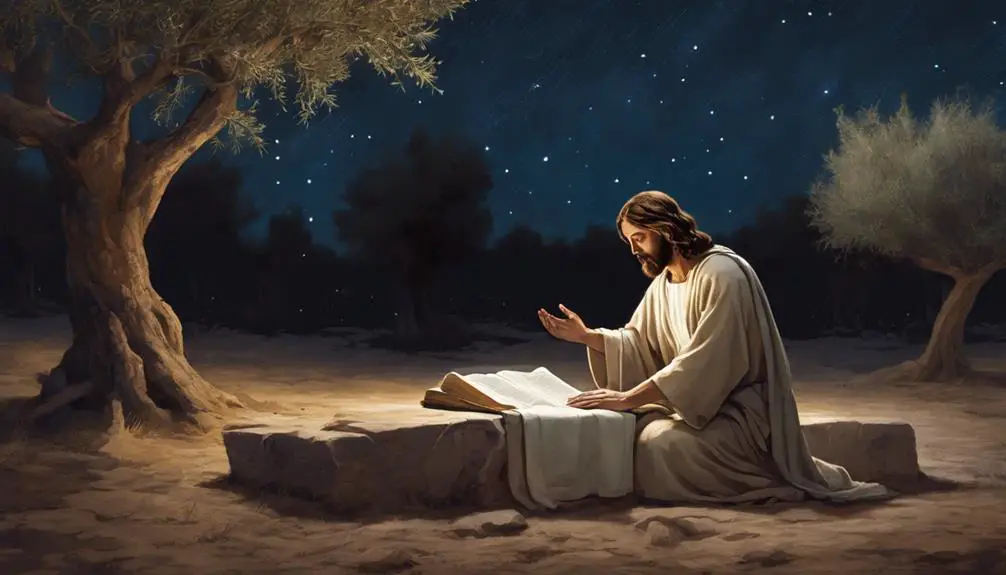
To fully grasp the concept of prostration in the Bible, you need to delve into its historical and cultural context. Prostration symbolism is rich and layered, and understanding it requires a keen eye for detail.
In Biblical contexts, prostration was often a physical act of reverence and submission, representing a person's lower status in relation to God or a superior figure. When you prostrate yourself, you're essentially acknowledging your own insignificance in comparison to the divinity or authority you're bowing before.
But it's not just about submission. Prostration also signifies deep respect and absolute trust in the entity you're submitting to. It's a way of saying, 'I trust you with my life, my fate, and my soul.' It's an act of humility, but also of faith.
And then there's the aspect of prayer. In many instances in the Bible, prostration is linked with fervent prayer and intense supplication. It's a physical manifestation of an inward spiritual reality: the supplicant's complete dependence on God.
Jesus' Prostration in Gethsemane
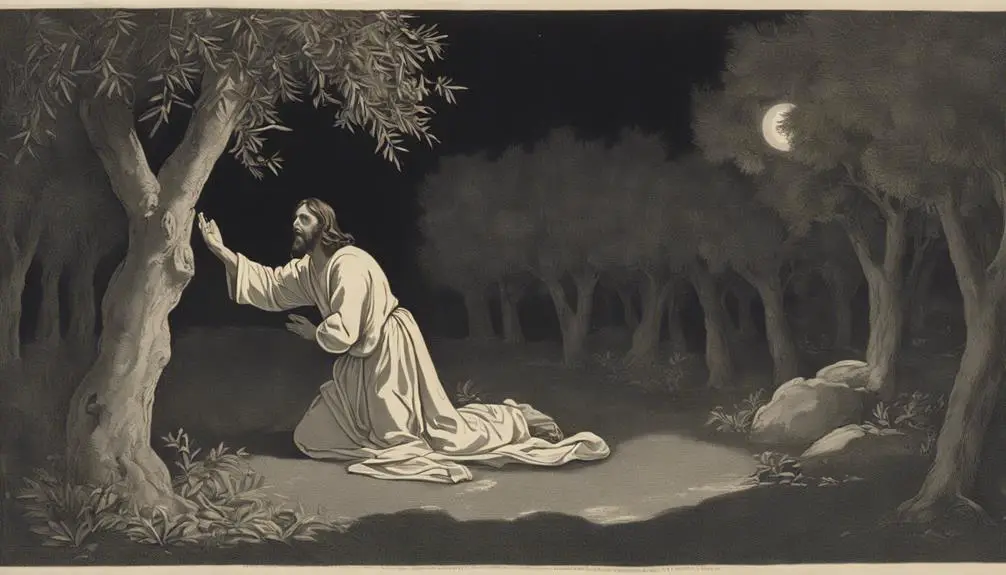
One of the most profound moments of prostration in the Bible is found in the account of Jesus' prayer in the Garden of Gethsemane. This act carries not only historical significance but also a deep spiritual symbolism.
Gethsemane's symbolism is multilayered. On one level, it represents a place of profound struggle and decision. It was here that Jesus, acknowledging his impending crucifixion, prayed fervently to God. His prostration, a physical act of complete submission, mirrored his spiritual surrender to God's will.
Jesus' anguish in this moment is palpable. The Gospel of Luke describes him as being in 'agony' and his sweat falling 'like great drops of blood' (Luke 22:44). This intense emotion wasn't mere dread of physical suffering. It was the weight of humanity's sins and the anticipation of separation from God that brought him to his knees.
This act of prostration wasn't just a prayer posture; it was a profound display of Jesus' humanity and divine submission. His prostration in Gethsemane thus serves as a powerful model of humble submission and deep-seated faith in times of great distress.
Prostration in Jewish Worship Traditions
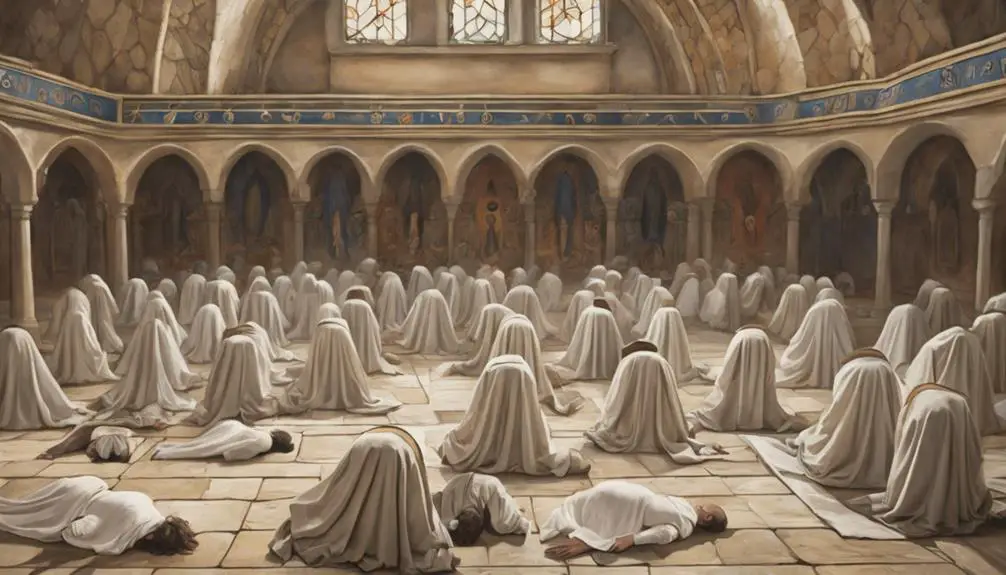
Delving into Jewish worship traditions, you'll find that prostration plays a significant role, demonstrating a deep sense of reverence and humility before God. This act of bowing or falling to the ground, known as "hishtachavayah" in Hebrew, is a common practice in Rabbinic Prostration Rituals, used to express deep respect and submission.
In the Synagogue, different Worship Postures are observed, each carrying its own meaning. Prostration, in particular, is a powerful symbol of total surrender to God's will, a clear acknowledgment of His sovereignty. It's not just a physical act, but a profound spiritual expression of faith.
To give you a clearer picture, let's break down the fundamental aspects of prostration in Jewish worship:
Aspect |
Description |
|---|---|
Posture |
Full body on the ground, face down |
Ritual Context |
Rabbinic Prostration Rituals |
Synagogue Practice |
Used during certain prayers |
Theological Meaning |
Submission to God, humility |
Theological Significance of Jesus' Prostration
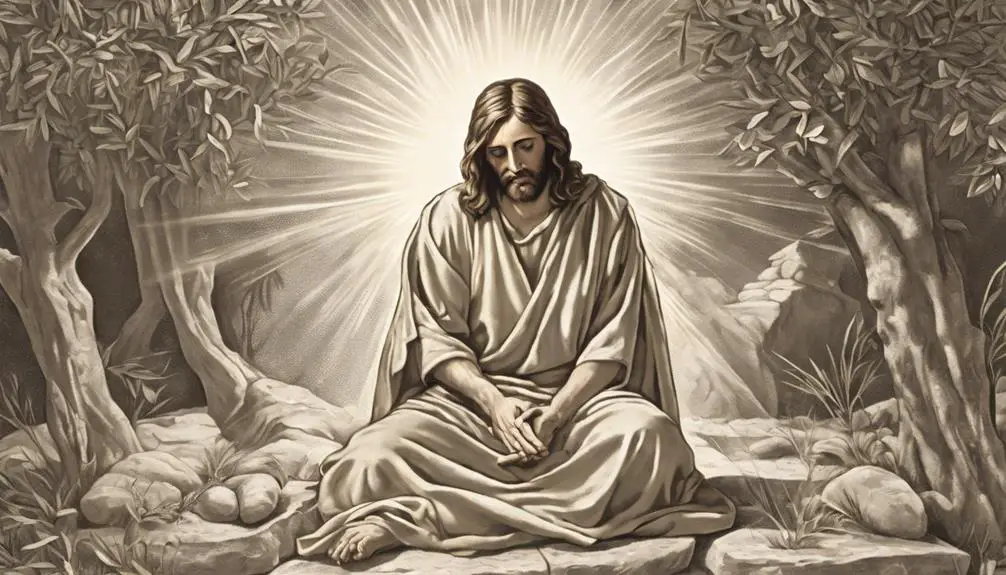
Reflecting on Jesus' act of prostration in the Bible illuminates its deep theological significance, highlighting the embodiment of humility, submission, and total surrender to God's will. This act represents Divine Humility, a concept central to Christian theology. Jesus, despite being divine, lowered himself to the ground symbolizing his willingness to humble himself before the Father.
This act also carries Prophetic Symbolism. Jesus' prostration wasn't just a physical act; it was a prophetic and symbolic one. Prostration reflects the deep-rooted belief of absolute surrender and submission to God's will, a sentiment echoed in the prophetic traditions. It's a tangible manifestation of the inner spiritual reality, providing a model for believers to follow.
You'll find that Jesus' prostration serves as a powerful message of humility and submission to the divine will. It challenges you to embody the same humility and submission in your worship and daily life. Jesus' act of prostration reminds you that true strength lies in humility, and in the surrender to a power higher than oneself. This enlightens your understanding of Christian faith and enriches your spiritual journey.
Contemporary Interpretations of Jesus' Prostration
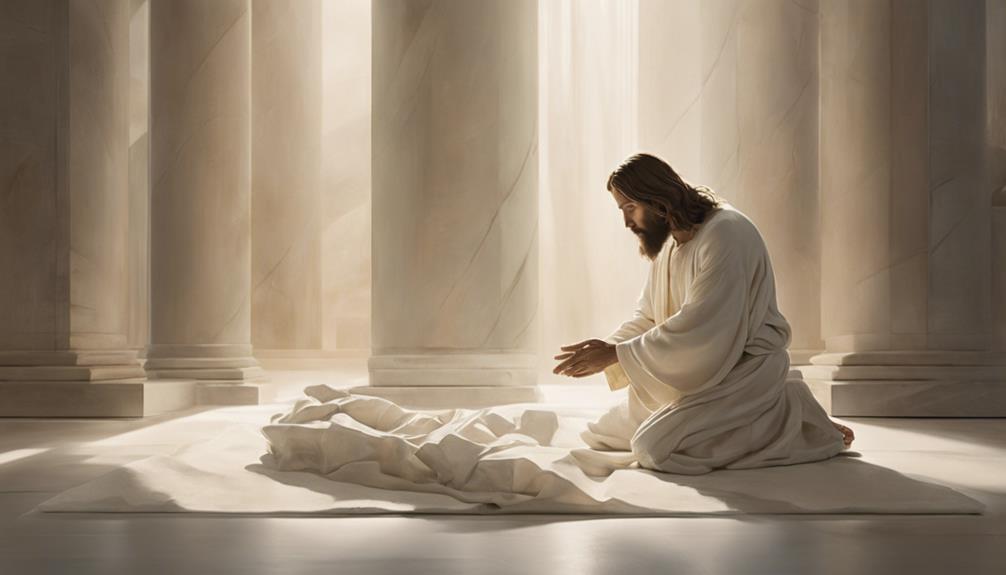
While the theological significance of Jesus' prostration offers profound insights, it's also fascinating to explore how this act is interpreted in today's context. You'll find that the symbolism of prostration is viewed with renewed significance by Modern Christianity.
Prostration symbolism has evolved to represent complete submission and humility before God, resonating with Jesus' act in the Bible. It's seen as a powerful gesture of faith and surrender, embodying the essence of Christian discipleship. You'll often encounter this attitude during worship, prayer, or personal reflection, reflecting the intimacy that Christians seek with their heavenly Father.
Modern Christianity's view emphasizes Jesus' prostration as a model of humility and submission. This act is seen as a declaration of dependence on God, a stark contrast to the self-sufficiency that dominates our society. It's a reminder that Christians are called to live in humble recognition of their need for God's guidance and grace.
In the diverse expressions of Christian faith today, Jesus' prostration continues to inspire. It's a powerful symbol, reminding believers of the call to humility, submission, and complete trust in God's will. As you delve deeper into this subject, you'll see the relevance of this act in shaping the Christian journey.
Frequently Asked Questions
What Are the Similarities and Differences Between Jesus' Prostration and Islamic Prostration?
In comparing prostration symbolism in Christianity and Islam, you'll find similarities and differences. Both use it as an act of submission and reverence to God.
However, in Islamic practice, it's a mandatory part of daily prayers, while in the Bible, Jesus' prostration is seen during intense prayer.
There's rich insight to be gleaned from these comparative theologies, each lending a unique perspective on the act of prostration.
Are There Any Other Instances in the Bible Where Jesus Prostrates Himself Apart From in Gethsemane?
Yes, there are additional instances of Jesus' prostration in the Bible beyond Gethsemane. Analyzing prostration's significance throughout the text, it's often linked to prayer, submission, or deep emotional expression.
Cultural interpretations vary, but it's generally seen as a profound act of humility. Remember, context is key in understanding these instances; the Bible's historical and cultural backdrop can shed light on their deeper meaning.
How Did the Act of Prostration Influence the Christian Rituals and Practices of Today?
You see, prostration symbolism has greatly influenced Christian worship evolution. It's a physical expression of humility and submission, shaping rituals like prayer and worship.
Over time, while the full act of prostration may have lessened, the essence remains. You'll see this humility embodied in kneeling during prayer or bowing one's head.
It's not just about the physical act, but the heart's posture, acknowledging God's sovereignty in worship.
Is There a Specific Prayer or Scripture Associated With Jesus' Prostration in the Bible?
You're asking about a specific prayer or scripture linked to prostration symbolism in the Bible. There isn't a direct scripture referring to Jesus' prostration.
However, in Matthew 26:39, Jesus kneels and prays in the Garden of Gethsemane, which many biblical interpretations see as a form of prostration.
It's believed this act shows his humility and submission to God's will, influencing Christian practices of prayer and reverence.
In What Ways Has the Depiction of Jesus' Prostration Changed in Christian Art Over the Centuries?
When you examine the evolution of prostration symbolism in Christian art, you'll notice significant changes. Early depictions were literal, showing Jesus physically on his knees.
Over time, artistic interpretations evolved, often representing prostration more symbolically. For instance, later artworks may hint at humility through a lowered gaze or bowed head.
Conclusion
You've journeyed through understanding biblical prostration, Jesus' own prostration in Gethsemane, its role in Jewish worship, and its theological significance.
You've also explored contemporary interpretations. You've seen how Jesus' prostration reflects humility, submission, and profound spiritual connection.
This act, deeply rooted in tradition, carries significant meaning for believers today. It's a powerful symbol, reminding us of Jesus' humanity, his relationship with God, and the depth of his spiritual commitment.



Sign up